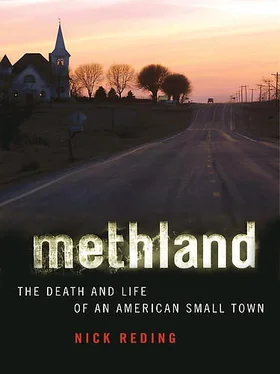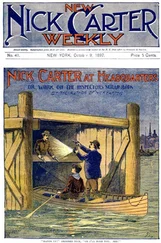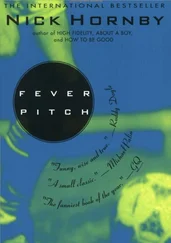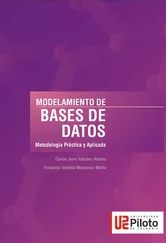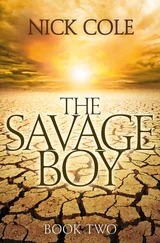Methamphetamine, like crack (and therefore, like cocaine, of which crack is merely a smokable form), encourages the first part of this biochemical transaction and blocks the second. That’s to say that because the reuptake of the neurotransmitter back into the “sponge” takes longer, you feel good for longer. Meth, though, appears to be unique among psychostimulants in one way, says Tom Freese, a doctor of clinical psychology at UCLA and a member of what is widely regarded as the foremost research team in the world studying the drug’s human effects. Freese says that both meth and crack “lurk” in the space between the brain’s neurons, where they stop the reuptake of dopamine, thereby “flooding” you with good feelings. But meth alone, says Freese, “goes inside the presynaptic cells to push dopamine out.” That, he says, “makes for more of a flood, if you will.” This ultimately might begin to account for why some neurological researchers see total depletion of neurotransmitters in sectors of the brains of chronic meth users. It’s perhaps no wonder, then, that the 1950s-era Methedrine and Benzedrine addicts depicted in the David Lynch movie Blue Velvet are associated with anarchy. Moving through the world, and the movie, unable to feel anything but rage, they are the embodienent of late-stage meth addiction, the political expression of the existential scourge and the bane of the work-based American dream.
Meth works on the limbic system of the brain, which is the brain’s reward center, as well as on the prefrontal cortex, where decision making takes place. A meth user’s feelings are reflected in what are called his executive actions, or what Freese calls “his ability to choose between what we all know to be good and bad.” Freese says that what feels good is tied directly to survival. The ability to make decisions, therefore, is in some ways controlled not by what people want, but by what they need. Meth, says Freese, “hijacks the relationship” between what is necessary and what is desired. “The result is that when you take away meth, nothing natural—sex, a glass of water, a good meal, anything for which we are supposed to be rewarded—feels good. The only thing that does feel good is more meth.” Moreover, he continues, “there’s a basic and lasting change in the brain’s chemistry, which is a direct result of the drug’s introduction.” The ultimate effects are psychopathology such as intolerable depression, profound sleep and memory loss, debilitating anxiety, severe hallucinations, and acute, schizophrenic bouts of paranoia: the very things that meth, just eighty years ago, was supposed to cure.
Sleep loss alone, Freese posits, can cause enough emotional and biochemical stress to result in long-term functional deficits. Once the effects of days of sleeplessness are compounded by the panic of memory loss and one of the more common hallucinations from which meth addicts suffer (for instance, that insects are crawling out of their skin), it’s no wonder that addicts do things non-addicts wouldn’t dream of. As Dr. Clay Hallberg, the Oelwein general practitioner, says, “I’d much rather be in the emergency room with a paranoid schizophrenic—and I’ve been in the ER with plenty—than a meth-head. They’re literally out of their minds.”
Roland Jarvis used to have a good job at Iowa Ham in Oelwein. It was a hard job, “throwing” hundred-pound pans full of hog hocks into a scalding roaster and pulling them out again, a process he likens to playing hot potato with bags of sand. But he made eighteen dollars an hour, with full union membership and benefits. That would be a lot of money today in Fayette County. In 1990, it was the kind of money about which a high school dropout like Jarvis could only dream. Jarvis had a girlfriend he wanted to marry, so he took double eight-hour shifts at Iowa Ham, trying to put away as much money as possible. On days that he worked back-to-back shifts, Jarvis had a trick up his sleeve: high on crank, with his central nervous system on overdrive and major systems like his digestive tract all but shut down, Jarvis could easily go for sixteen hours without having to eat, drink, use the bathroom, or sleep.
According to Jarvis and Clay Hallberg, it was common in the 1970s and 1980s to get meth from Doc Maynard, a general practitioner in nearby Winthrop, Iowa. Into his seventies, Jarvis and Clay say, Maynard wrote thousands of illegal prescriptions for Methedrine, mostly for young girls who wanted to lose weight, but also for farmworkers and industrial laborers. A more powerful kind of dope occasionally came to northern Iowa from California in those days, too. A local from Oelwein, Jeffrey William Hayes, who insists on being called by his full name, had gone to Long Beach to look for work among the small community of northeast Iowans living there. Hayes had come back to Oelwein with the dope, which was called P2P, for the ingredient phenyl-2-propanone. Every now and again, Jeffrey William Hayes would load his wife and his young daughter, Hanna, into an eighteen-wheeler cab, drive to Long Beach, pack the wheel wells with P2P crank, and drive home to sell it.
For the most part, though, the methamphetamine market in Oelwein was hit and miss. When there was a lot, there was a lot, and when there was none, it was bone-dry. And though Jarvis was heterosexual, and gossip spreads fast in Oelwein, he says he didn’t mind trading sex with men for meth. In fact, by the time he was working doubles at Iowa Ham, he’d do what ever he could to get the drug. Jarvis considered meth to be his job security. It made Jarvis into the ideal employee. He was like a gorilla throwing the ham trays around. Then he’d come home and he could have sex with his girlfriend for hours on end, drink without getting drunk, and be awake for work the next day without ever having slept.
By the early 1990s, more and more P2P dope was entering Oelwein via California, thanks in part to the connections that had been forged by Jeffrey William Hayes and his business partner, Steve Jelinek, whose parents owned Oelwein’s flower shop. In 1992, Iowa Ham, a small, old canning and packaging company, was bought by Gillette. Overnight, the union was dismantled, and the wages, according to Jarvis and Clay Hallberg, fell from $18 an hour to $6.20. For Jarvis, who now had the first of his four children, it became more important than ever to work harder and longer in order to make ends meet. His meth habit increased along with the purity of the dope. And then one day he did the math. On the one hand, he was making $50 every eight hours to do a job in which there was a 36 percent rate of injury, thereby making meatpacking the most dangerous vocation in the country. For this, Jarvis, now that he worked for Gillette, got no medical coverage for himself or his children, no promise of workers’ compensation should he be hurt, and no hope of advancement. (With Iowa Ham, every employee had not only gotten benefits; they’d owned stock in the company.) On the other hand, Jarvis was paying a hundred dollars at a time in order to buy enough meth to be able to work double shifts for five days straight. For Jarvis, the solution was clear: He would go into business for himself.
The high Jarvis has built his life (and at one point his livelihood) around has five parts: the rush, the high, the shoulder, the tweak, and the withdrawal. Snorting just a couple of lines of reasonably pure meth kept him involved in this continuum for at least twelve hours. Twelve hours is roughly the length of meth’s half-life, and a measure of how long it takes one’s body to completely metabolize the drug, as well as an indicator of how powerful the drug is. (The half-life of crack is only twenty minutes, or about thirty-six times less than meth.) The rush is just what the term suggests: an initial feeling of tremendous euphoria. Dr. Clay Hallberg describes it as “taking all of your neurotransmitters, putting them in a shot glass, and slamming them.” The high is the hours-long period of an exceptionally vivid confidence and sense of well-being that Jarvis experiences while dopamine and epinephrine literally pool around his brain’s neuronal synapses: a biochemical bacchanal. The physical effects include a litany of the body’s most ecstatic and powerful reactions. Core temperature spikes and blood flow to the heart increases dramatically. For men, so, too, does blood flow increase enormously to the penis, and for men and women both, there is an increased need and desire to have sex, a fact that helps explain why meth abuse in gay communities is linked to huge increases in AIDS and hepatitis C. And none of it—not the “full body orgasm” so commonly referred to, or the ability to drink without getting drunk, or the ability to have sex for hours at a time without losing an erection—comes at an obvious, outward cost: no slurring, no falling down, no passing out.
Читать дальше
